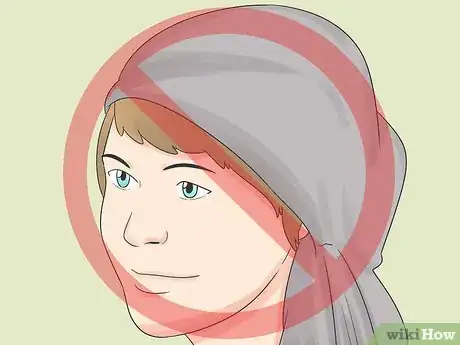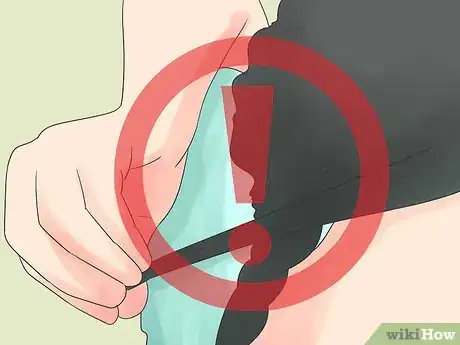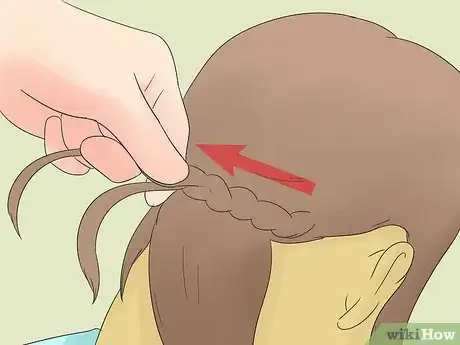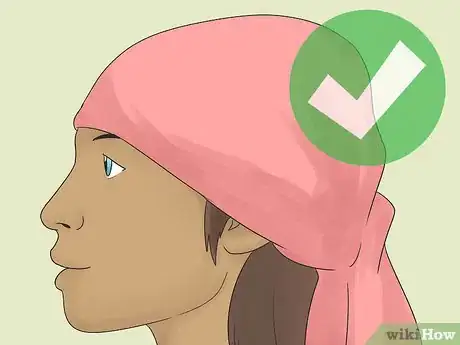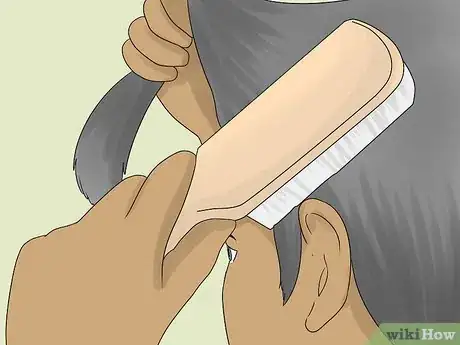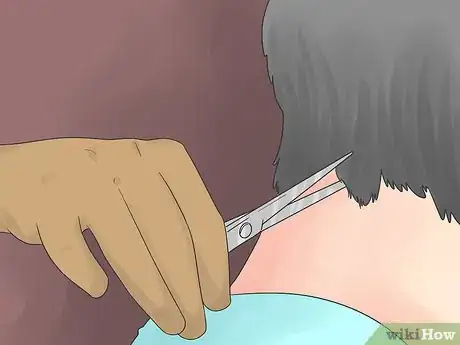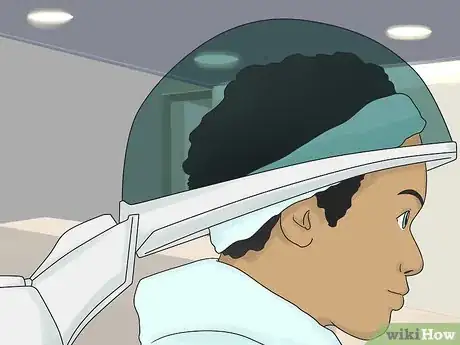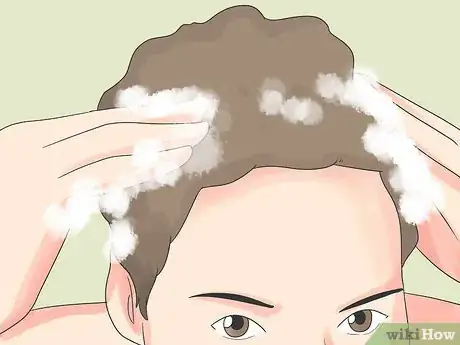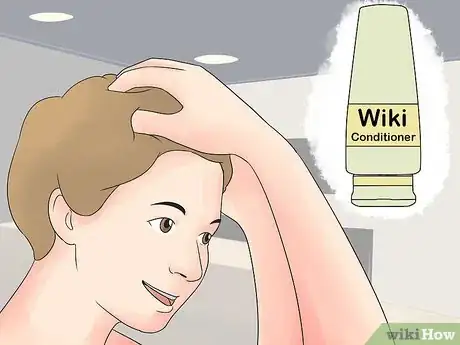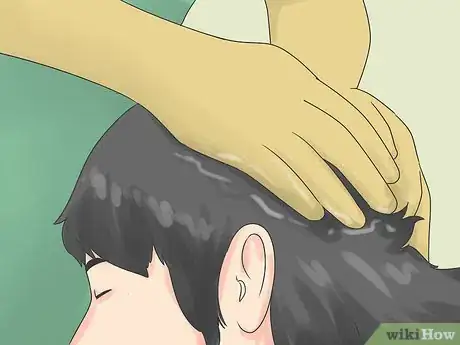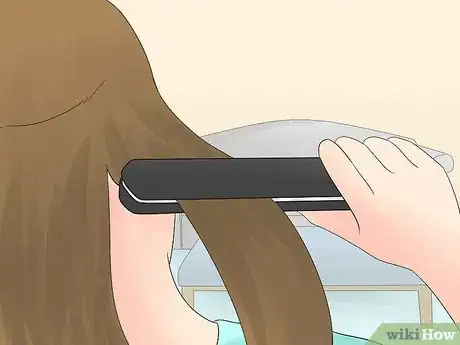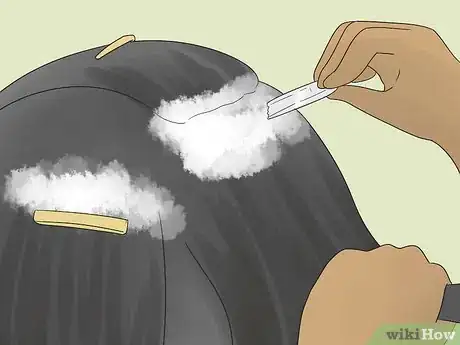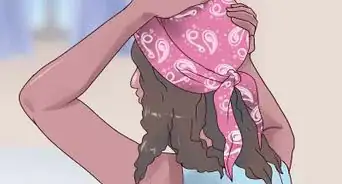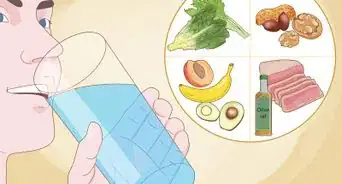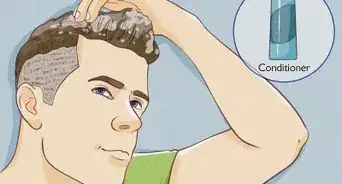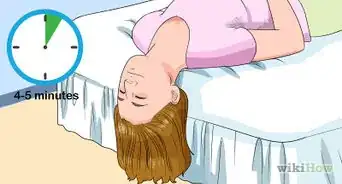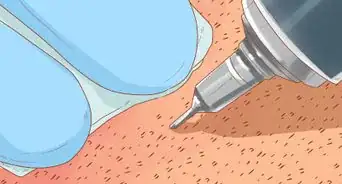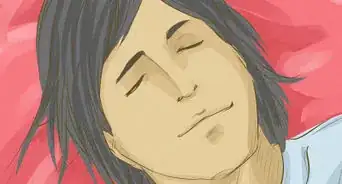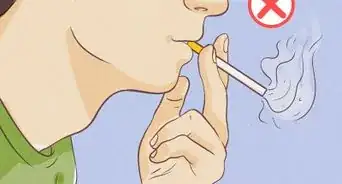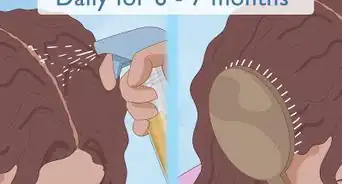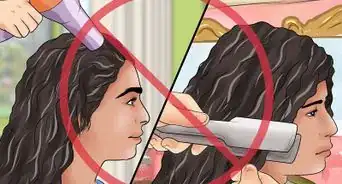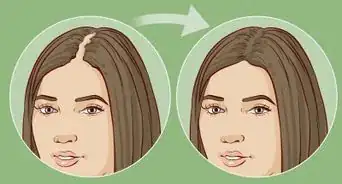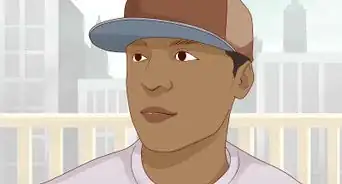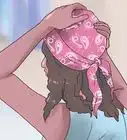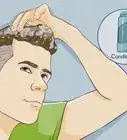This article was co-authored by Patrick Evan. Patrick Evan is the Owner of Patrick Evan Salon, a hair salon in San Francisco, California. He has been a hairstylist for over 25 years and is a Thermal Reconditioning Specialist, dedicated to transforming difficult curls and waves into sleek, straight hair. Patrick Evan Salon was rated the Best Hair Salon in San Francisco by Allure magazine, and Patrick's work has been featured in Woman’s Day, The Examiner, and 7x7.
There are 8 references cited in this article, which can be found at the bottom of the page.
This article has been viewed 28,018 times.
Nape hair can be some of the most fragile hair and often is prone to breakage. If you want to grow out your nape hair, you need to avoid damaging it by being careful about how much tension you apply, brushing gently, and protecting it at night. You also need to cleanse and condition it regularly to keep it hydrated. Massage your nape hair with oils weekly to help it stay strong.
Steps
Avoiding Breakage
-
1Avoid abrasive fabrics. If you wear heavy, coarse materials close to your nape hair, this can cause it to become damaged and break. Try to keep your hair up and away from anything that could potentially harm your nape hair. Direct contact with abrasive fabrics can cause damage over time, so it’s important to keep this in mind all year long.
- This is especially important during the colder months of the year when you are more likely to wear heavy fabrics near your nape hair – like heavy coats, sweaters, and scarves.
- This also includes tight caps or hats, headbands, and turbans.
-
2Be careful about applying tension. Remember that pulling your hair tight or manipulating it in certain ways can cause damage and breakage. Regardless of what style you choose, you should be mindful of the amount of pressure you are applying to your nape hair if you want to keep it healthy and strong.
- Pay particularly close attention to this factor if you have a weave, tight braids or ponytails, or regularly wear a wig, as these kinds of styles can add the most tension to your nape hair.
Advertisement -
3Braid nape hair horizontally. Consider braiding your nape hair horizontally across the back of your nape, even if the rest of your hair is braided in a different way. This could help reduce tension by allowing you to loose-braid the sensitive nape hair.[1]
- Don’t pull the braid tight or finish it off too tightly with a hair tie or rubber band. These things could add more tension and cause breakage.
-
4Cover your hair to protect it. In order to avoid breakage, you should consider covering it at night to protect it. You can use a satin or silk pillowcase to sleep on, or cover your hair with a bonnet/headscarf. Remember to make sure your nape hair is covered as well.
- This will help protect all of your hair from potential breakage as you sleep, but especially the edges and the nape hair.
-
5Brush your nape hair gently. Brushing your nape hair will help keep these hairs from forming into pesky knots. Just be sure to do it gently so that you don’t contribute to the breakage.[2]
- Brushing your nape hairs regularly means that they will need to be detangled less frequently.
- If you wear your hair loose or down often, comb your nape hair everyday.
- Don’t brush your hair when it is wet.
-
6Keep nape hair trimmed. In order to avoid breakage, you should keep your nape hair trimmed regularly. Even if you are trying to grow out your nape hair, trimming it fairly frequently will help remove any possibly damaged ends and promote the growth of new, healthy hair.[3]
- Just remember that you don’t want to cut it too short each time, as this will make it take longer to grow out.
- You can trim your nape hair at the same time as a regular haircut. How often you cut your nape hair depends on how often you usually get your hair cut.
Caring For Your Nape Hair
-
1Keep it moisturized. Hydration is very important for this delicate portion of your hair, especially if you have curly or tightly coiled hair. Keeping your nape hair moisturized will help it maintain its natural elasticity and prevent excessive dryness that can lead to breakage.[4]
- Consider using a steamer on your nape hair for additional moisture.
-
2Cleanse your nape hair regularly. It is quite easy to overlook the nape hair when you are washing your hair. Make sure that you are thoroughly cleaning your nape hair each time you wash it so that all of the products and dirt are rinsed out every time. Dirty or grimy hair is much more prone to breakage.[5]
- Remember to massage your nape hair gently while cleaning to help avoid tangles, knots, and tension.
- Consider using herbal shampoos that are less damaging for your hair.
-
3Condition your nape hair often. Make sure to include your nape hair in your normal conditioning routine. Forgetting to condition this region can lead to dryness that makes it susceptible to breakage.[6]
- Consider applying the conditioner to your nape area first so that it gets the most conditioning time possible.
-
4Massage it with oils. Massaging your nape hair will help stimulate blood to the area and encourage new hair growth. Simply warm up a few tablespoons of your favorite oil and dip your fingers into it. Use your fingertips to gently massage the oil into your nape hair in a circular motion for 2-5 minutes. You should try to use this massage technique once every week.[7]
- Try using tea tree oil, coconut oil, avocado oil, or peppermint oil.
-
5Apply a hair growth serum. There are several serums, oils, foams, and other products that claim to help grow your hair. Follow the directions on the package before applying the product to your nape. Use the product daily.
-
6Use heat protectant products before styling with heat. Using heat styling products (like straighteners and curlers) are a great way to get certain kinds of styles, but they can also be very damaging to your hair. This is especially true for more fragile hair, like nape hair. Be sure to apply a heat protectant product to your nape hair before using any kind of heated styling tool.[8]
- Some good heat protectant products include GHD Heat Protect Spray, Lee Stafford Original Heat Protection Shine Mist, or Bumble and Bumble Invisible Oil Primer.
-
7Relax your nape hair at the end. Since the nape hair is one of the most sensitive and fragile sections of your hair, you should apply relaxer to it as the last step. If you leave it on for too long, it can become over-processed and damaged.[9]
- Over-processed hair often becomes quite dry, which leads to more frequent breakage.
References
- ↑ https://www.youtube.com/watch?v=ZbupGVjj6TY
- ↑ https://www.naturallycurly.com/curlreading/curly-hair-care-methods/how-to-deal-with-annoying-nape-hair/
- ↑ http://www.essence.com/galleries/5-ways-grow-your-nape-area
- ↑ http://www.essence.com/galleries/5-ways-grow-your-nape-area#565541
- ↑ https://bellatory.com/hair/Growhair_edges
- ↑ https://www.naturallycurly.com/curlreading/curly-hair-care-methods/how-to-deal-with-annoying-nape-hair/
- ↑ http://thirstyroots.com/oils-for-african-american-hair.html
- ↑ http://www.independent.co.uk/extras/indybest/fashion-beauty/hair/best-heat-protection-spray-uk-for-afro-hair-curly-straighteners-boots-a7534086.html
- ↑ http://www.essence.com/galleries/5-ways-grow-your-nape-area#565531
